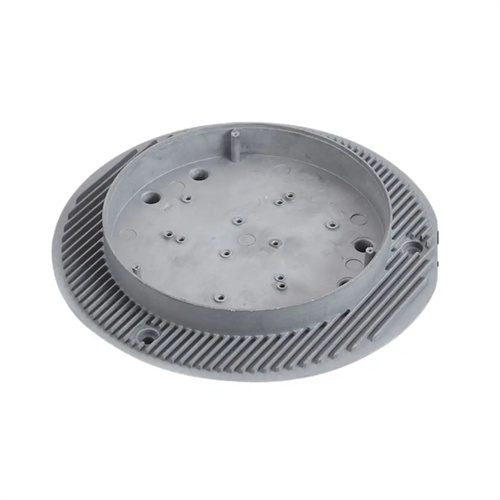Die casting coatings
Die-casting coatings are specialized materials applied to the mold cavity surface during die-casting production. Their primary function is to improve the interaction between the molten metal and the mold, ensuring a smooth die-casting process and enhancing casting quality. These coatings typically consist of a base, solvent, suspending agent, lubricant, release agent, and a small amount of functional additives. Different composition ratios impart distinct properties to the coating. The base, the coating’s primary film-forming substance, is often a high-temperature-resistant resin or inorganic compound such as silicone, graphite, or mica. It forms a tough, protective film on the mold surface, shielding it from direct impact from the hot molten metal. The solvent dissolves and dilutes the base, facilitating spray application and ensuring uniform adhesion. Common volatile liquids include alcohol and kerosene. The suspending agent prevents solid particles in the coating from settling, ensuring uniform coating application. The lubricant and release agent reduce the friction between the molten metal and the mold, minimizing release resistance.

Die-casting coatings can be divided into various types depending on the type of die-casting alloy and the quality requirements of the castings. For aluminum alloy die-casting, since aluminum alloys easily react chemically with the mold surface at high temperatures, it is usually necessary to use coatings with isolation and anti-sticking properties, such as lubricants with graphite or molybdenum disulfide as the main components. These coatings can form a lubricating film on the mold surface to prevent the aluminum alloy liquid from sticking to the mold. For zinc alloy die-casting, due to the low pouring temperature of zinc alloy, the high-temperature resistance requirements of the coating are relatively low. Lightweight coatings based on mineral oil are often used. They can lubricate without leaving excessive residue on the casting surface. For magnesium alloy die-casting, since magnesium alloys are easily oxidized and have a strong affinity with the mold, special coatings with antioxidant and high lubricity are required, such as composite coatings containing rare earth elements, to ensure smooth demolding of the casting and reduce surface defects.

Die-casting coatings also exhibit diverse characteristics in terms of form and application method. In terms of form, they are divided into liquid coatings, paste coatings, and powder coatings. Liquid coatings are widely used because they are easy to spray and adhere evenly. When used, they can be evenly sprayed onto the mold cavity surface using a manual spray gun or automated spray equipment. Paste coatings usually contain a high proportion of solid lubricants and are suitable for areas of the mold that are more severely worn. They need to be evenly applied using a coating tool. Powder coatings need to be mixed with a solvent before use. Their advantages are easy transportation and storage, and the concentration can be flexibly adjusted according to needs. The choice of coating method should be based on the scale of production and the degree of automation: small die-casting companies often use manual spraying, which is lower in cost but has poor coating uniformity. Large automated production lines are equipped with robotic spraying systems that can precisely control the amount of coating and the spray range to ensure that every cavity surface receives an even coating.

The performance of die-casting coatings can change with the operating environment, so strict control is required during storage and use. During storage, coatings should be kept away from direct sunlight and high temperatures to prevent solvent volatilization or base material deterioration. Water-based coatings should also be protected from freezing at low temperatures. Before use, the coating should be thoroughly stirred to ensure uniform mixing of all components. For coatings with severe sedimentation, proper heating or the addition of a thinner can be used to restore fluidity. Furthermore, the coating’s expiration date requires special attention. Expired coatings may experience performance degradation, such as decreased lubricity and poor film-forming properties. Continued use can affect casting quality. Therefore, companies should establish a coating management system and regularly inspect the coating’s condition to ensure that the coating used meets process requirements.

With the continuous advancement of die-casting technology, die-casting coatings are also upgrading towards high-performance and environmentally friendly finishes. Traditional solvent-based coatings, due to their presence of volatile organic compounds (VOCs), pose adverse effects on the environment and operator health, and are gradually being replaced by water-based and solvent-free coatings. Water-based coatings, which use water as a solvent, are characterized by low pollution and high safety. Through optimized formulations, their lubricity and high-temperature resistance approach or even exceed those of traditional solvent-based coatings. Solvent-free coatings, on the other hand, contain no volatile components and cure through a chemical reaction after application, making them suitable for applications requiring the highest environmental standards. Furthermore, functional composite coatings are becoming a research hotspot. For example, the addition of nanomaterials to coatings can significantly improve the coating’s wear resistance and thermal insulation, extending mold life. Coatings containing antimicrobial ingredients can reduce bacterial growth on mold surfaces and are therefore suitable for die-casting products in the medical field. The application of these new coatings not only enhances the environmental performance of die-casting production but also provides strong support for further improvements in casting quality.
